Menus

wolf

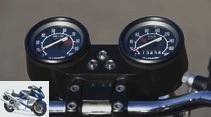

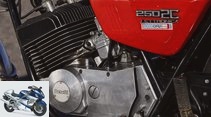
12th photos
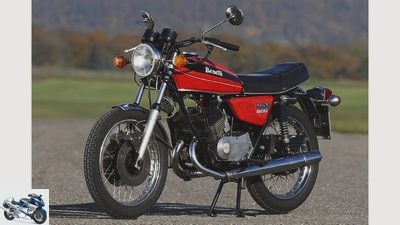
wolf
1/12
Benelli 250-2C.

wolf
2/12
Benelli 250-2C.
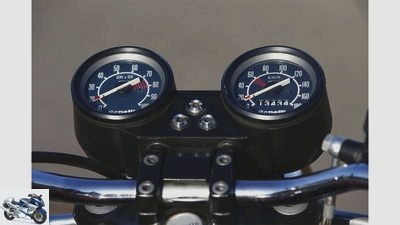
wolf
3/12
Benelli 250-2C.
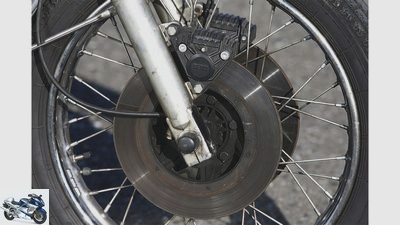
wolf
4/12
Benelli 250-2C.
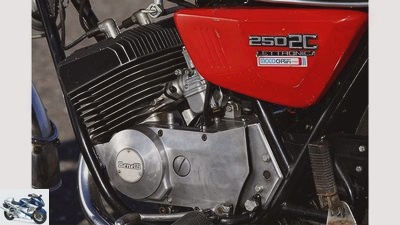
wolf
5/12
Benelli 250-2C.
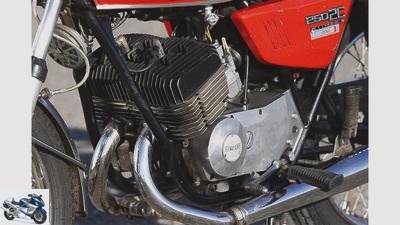
wolf
6/12
Benelli 250-2C.
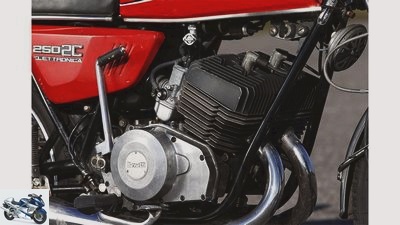
wolf
7/12
Benelli 250-2C.
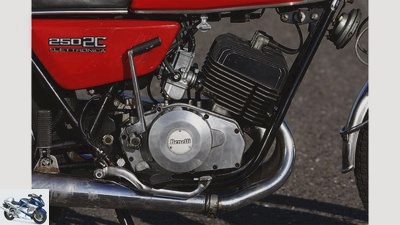
wolf
8/12
Benelli 250-2C.
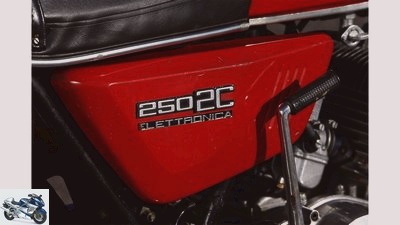
wolf
9/12
Benelli 250-2C.
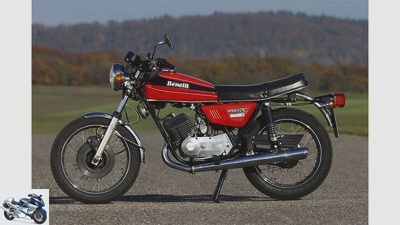
wolf
10/12
Benelli 250-2C.
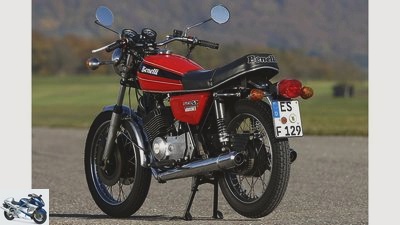
wolf
11/12
Benelli 250-2C.

wolf
12/12
Benelli 250-2C.
Cult bike Benelli 250-2C
Italian elegance and lightness
Anyone who had a 250cc two-cylinder was allowed to have a say. Back then, a good 40 years ago. Most demanded at least 30 hp, only the brave opted for light and elegant Italian women like the Benelli 250-2C.
Alessandro de Tomaso firmly believed that success could be copied. That is why the ex-racing driver and industrialist formed the model range of the Benelli Group in the Japanese style shortly after the takeover. In the particularly cost-sensitive segment between 125 and 250 cm³, he relied on two-stroke twins that had been developed before his reign, above that on four-stroke fours, only at the very top he entered new territory with the six-cylinder 750 Sei. But although all constructions followed the technical specifications from the Far East and were influenced here by Yamaha, there by Honda, they reveal amiable peculiarities on closer inspection. This is particularly true of the one presented at the Milan Salon in 1972 and developed by the German two-stroke specialist Peter Durr B.enelli 125 and Benelli 250-2C.
Buy complete article
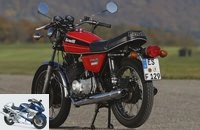
Cult bike Benelli 250-2C
Italian elegance and lightness
A whopping 20 kilos less than the Nippon competition
Anyway, there should be people who like to let it go. This is where the Benelli 250-2C comes in: It weighs a whopping 20 kilos less than the Nippon competition and unites chassis components around its beautifully clear and delicately drawn double loop frame that the Japanese couldn’t manage at the time. Sensitively appealing but not too soft Marzocchi spring elements are just as impressive as the casual directional stability and, above all, easy handling. The beautiful duplex drum brake was supplied by Grimeca, which was able to keep up with the common disc brakes of its time, before Benelli converted to a crisp Brembo disc brake in 1976.
Despite the weaknesses mentioned – there were also slight quality defects – the Benelli 250-2C charmed everyone with its fine, cultivated manner, with its convincing responsibility for absolute lightness. At MOTORRAD in any case, when the first specimens arrived for the German market in 1974, not only the long-serving and eagle-infected permanent two-stroke engines were enthusiastic.
In issue 4/2015, MOTORRAD Classic compared the 250-2C with the Suzuki GT 250 and the Maico MD 250. Reorders at 07 11/32 06 88 99.
Technical data Benelli 250-2C
wolf
With a full tank, the Benelli 250-2C weighs a light 134 kilos.
Benelli 250-2C (YOC 1975)
Air-cooled two-cylinder two-stroke in-line engine
Displacement: 231 cc
Power: 17.7 kW (24 hp) at 7500 rpm
Torque: 23 Nm at 7000 rpm
Five-speed transmission
Double loop frame made of tubular steel
Weight with a full tank: 134 kg
Tires: front 3.00 x 18, rear 3.25 x 18
Tank capacity: 12.5 liters
Top speed: (long lying) 150 km / h
0-100 km / h in 12.9 sec.
Scene and information
wolf
Really good examples of the Benelli 250-2C are available today for almost 2500 euros.
scene
The 2C models replaced several two- and four-stroke strokes from the Benelli general store, they were also offered as Motobi and somewhat modified as Moto Guzzi. Although competitively priced, the breakthrough in Germany failed. After all, they inspire a stable fan base today. There are still good specimens in circulation, prices start at around 1000 euros for the 125 and around 1500 euros for the Benelli 250-2C. Really good machines cost 1000 euros more. There are enough spare parts available.
info
There is no German literature on the Benelli 250-2C. The English work “Benelli” (18 euros) by Mick Walker provides information about Benelli in general. The Italian workshop manual is also available (25 euros). Both titles are distributed by www.benelli-bauer.com, which is also the largest spare parts dealer and a central point of contact for the scene. Further information at: www.benelli-ig.de and www.zweitakte.de
Related articles
-
www.bilski-fotografie.de cult bike Yamaha XJ 900 From athlete to tourer How comfortable it can be between all chairs, Yamaha demonstrated with the much too …
-
archive Cult bike Benelli Tornado 650 Benelli Tornado 650 An Italian fad – showing prototypes that won’t go into production until years later – used to…
-
fact 20 pictures fact 1/20 The Suzuki GT 380 was in Germany from the end of 1972 to 1980, … fact 2/20 Thus, the chrome-clad GT 380 fires from four …
-
Jahn cult bike Yamaha RD 350 LC Yamaha RD 350 LC The two-stroke theme was through forever. Exhaust gas, noise, yes, yes, it’s okay, must be. Then came the end …
-
fact 20 pictures fact 1/20 The Yamaha XJ 650 found almost 14,000 buyers in Germany from 1980 to 1984, and there are still around 5000 copies in …
-
Siemers cult bike: Yamaha XS 500 Yamaha XS 500 There was neither internet nor mobile phone, there were not even standard street four-valve engines. Until 1976, then came …
-
Archive single-cylinder cult bike: BMW R26 / R27 BMW R26 / R27 In the beginning they motorized the economic boom, later schoolchildren and students, today …
-
Herzog Kultbike Cagiva Elefant Desmodromik paired with studs Desmodromik and studs go together like silk vest and rubber boots. Many think …
-
Schwab The cult bike from BMW BMW R 100 RS Rain suit manufacturers hated this bike because it made them unemployed. And for a long time, youngtimer fans…
-
Cult bike Suzuki VS 1400 Intruder
fact cult bike Suzuki VS 1400 Intruder So clean, so strong, so enduring Usually the Japanese prefer consensus. The Suzuki VS 1400 Intruder, however …